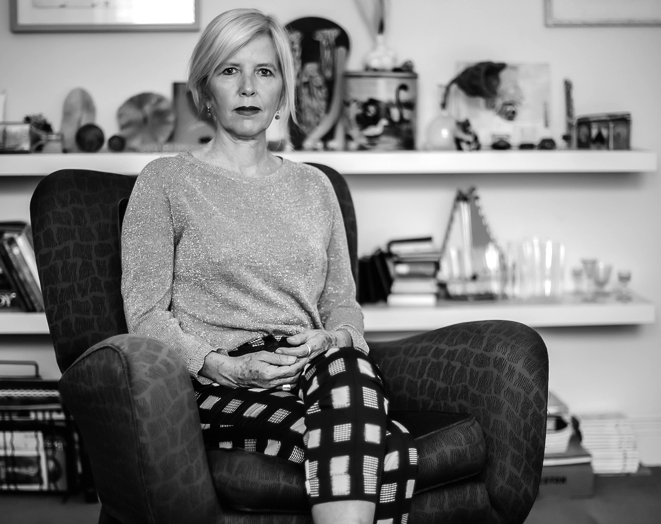
On 26 March 2021, in a window between lockdowns, author and filmmaker Miro Bilbrough and I met to discuss her free-wheeling memoir, In the Time of the Manaroans (Ultimo Press, 2021). The conversation transcribed here was shared with a wide audience via Zoom as part of the online ‘Room to Listen’ seminar series, hosted in Parramatta by the Writing and Society Research Centre at Western Sydney University. I now invite you to read, listen and absorb Miro’s flair for poetic storying.
Kate Fagan: In the Time of the Manaroans is very interested in categories and thresholds – whether that’s about generations, childhood, adulthood, or places of stepping-off and return. It’s also interested in leaving the gaps and silences in stories, sometimes by the forms it chooses to engage in. So, I’d like to begin this conversation with ideas of form and ideas of home. One beautiful image of yours that caught my mind is a single sentence: ‘home is a vexed category’. I really hung onto the idea of what ‘home’ might mean in your book.
Just for a little background, this book tells a story of a young woman on the cusp of adulthood, often navigating life in the Pelorus Sound area – so, the north-eastern archipelagic tip of the South Island of New Zealand – in particular, within a community of people who are referred to as the Manaroans. The community lives in Manaroa. It’s not quite an island, is it, but it’s very remote …?
Miro Bilbrough: No, not an island. The Pelorus Sound is a continuous winding landform, in many parts accessible only by sea.
KF: You tell us about the journey of moving with various kin and family – your parents, and sometimes your sister – from Waiheke Island, just near Auckland, down to Wellington, then to Nelson and Blenheim. So, you move readers further and further into a kind of ‘south’, and into a sense of connected remoteness in the south. I wonder if you can briefly set the scene, by telling us what drove you to write the memoir, and by giving us a sense of the terrain covered.
MB: In 2003, I made a film called Floodhouse which was my first attempt at a fictionalised version of some of the physical and emotional territory of In the Time of the Manaroans. The actual Floodhouse, which opens the memoir too, was my father’s rented house, where I moved to from my grandmother’s flat when I was 14. In my screenplay for Floodhouse, I was fictionally transposing an autobiographical time and place –which has its own strains. And I was working within the film financing sector, another strain. Even so, I felt there was a poetic truth that we managed to collectively realise in that film.
I didn’t realise it at the time, but I wasn’t done with the territory. Thirteen years later, this book started nudging me. By this stage, I was ready to claim my voice in a more direct sense. I needed to work outside of film financing and to write something quite directly. I had just come out of a Doctorate of Creative Arts, which was a profound experience but an absolute wrestle in terms of scholarly language. I needed to go back to another language, a prose-poet’s language. The material of this book catapulted me there. I wrote the first 10,000 words in a week. I surprised myself. And then the book wouldn’t let go. It was writing me. It was waiting to be written. It was the right time.
KF: Perhaps there are metaphors of unlocking, or flooding, that might be accessed in the book. But I’d love to pick up on the idea of things developing in the dark room of your imagination. I think we go back, here, to psycho-geographies and your gorgeous depictions of character – but in a way, it’s your photographic figures that bring this book together. I wonder if you could speculate a little about the form that you chose for this memoir? It seems to be a photo album, a series of portraits. The narrative constellates around individual photographic moments, and this generates tremendous vitality. Could you speak a little to photographic elements and the form you chose? Why did the story come out in ‘vignettes’, as you call them? Sometimes they’re just a page or two long.
MB: I suspect that I think in vignettes or vignettes think me. I am obsessed with portraiture. When I read W. G. Sebald many years ago, the four portraits of Vertigo, it was an experience of encountering a new possible, a possible that I was predisposed to. I remember thinking, ‘You can do a whole book of portraits. Never mind about the plot. The plot is in the characters’. I come from writing prose poems which were often about a page long and, at some point, I consciously thought, ‘I can do this, it’s just 200-odd prose poems’. That’s a little bit disingenuous because I’ve written feature films and have, in a sense, been training the prose-poet in long form narrative for years. I do have an over-arching sense of structure, but I approach it tweak by tweak. Bite by bite.
I was empowered when I heard Michael Ondaatje talking about his latest novel Warlight. It has such a sinuous, cleverly circling plot. You don’t know where it is going to take you, or who characters are going to reveal themselves to be. I heard Ondaatje say, in an interview, that he only ever knew six pages or so ahead when he was writing. It was extraordinary to me that that book was written out of that kind of consciousness. Comforting, too. It was a bit different for me because I do know my story but, that said, I don’t. And In the Time of the Manaroans is many other people’s stories that I didn’t know were going to come into this book. They just turned up.









